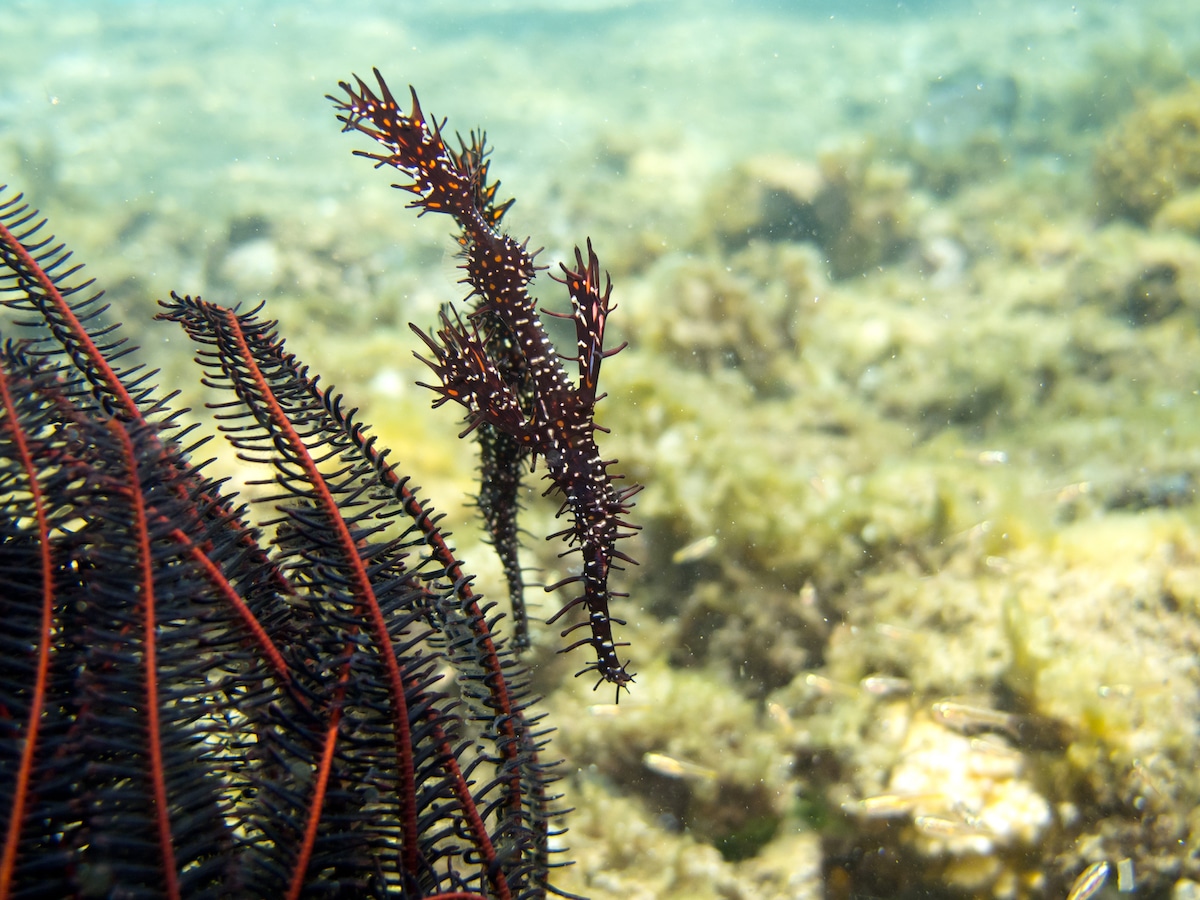

Their white feathers help them survive in the snowy landscape. This makes it difficult for predators to spot the owl when it remains hidden within the cavities of the tree. Its white, gray, or tan body blends well with the barks. The tufts help break the round face profile of these owls thus, they seem to be a part of the barks and woods they inhabit. Specialized feathers or tufts help them disguise themselves. This protects them from potential predators as their dark body blends with the ocean depths. These turtles follow the countershading technique where the dorsal part appears dark, and the ventral part has a lighter shade. They remain hidden in flowers, changing their colors to match their habitat well. One can barely spot these red squirrels when they remain perched on the barks of pine trees. In winter, their body turns white, camouflaging with the snowy terrain. They have a grayish-brown coat in summer that replicates the brownish moorlands they mainly inhabit. However, this helps them blend into their surroundings well. They change color to regulate their body temperature and send signals to their fellow chameleons.

Their green body, black spots, and visible spines make them look like clumps of mosses.Ĭhameleons don’t change color to camouflage. Moreover, their tail bears a striking similarity to a leaf that helps the geckos blend into their surroundings well. Their mottled brown body resembles a branch. Camouflage and mimicry are only some examples, although they are very commonly used ones.List of Animals that Use Camouflage (Change Color) Name Other Visual EffectsĮye spots are often referred to as aggressive mimicry, the use of a deceptive coloration or pattern to avert a predator or prey species’ attention from the important area of the animal.Įye spots can cause predators to go for them in an attempt to seriously wound the animal, only to cause minimal damage to a wing instead of the body of the butterfly or moth.Īnimals have evolved many ways to avoid predators and catch their dinner. Having a group of poisonous species look alike can allow predators to avoid them as a general rule. New research has revealed that the viceroy is equally distasteful to birds and that the relationship is actually one of Mullerian mimicry. One such example is the viceroy butterfly which for many years was thought to be a harmless mimic of the poisonous monarch butterfly. Some species start out as being Batesian mimics only to have further research reveal that they are as distasteful as the perceived original. Mullerian mimicry occurs when several species resemble one another despite being unrelated and all are unpalatable. A number of species of snake mimic the striped pattern of the dangerous coral snake. Although it is quite common in insects, it does occur in other groups as well such as snakes. Some poisonous species have many species that mimic it in an attempt to avoid predation.
#Camouflage animals skin#
Like the chameleon, they have chromatophore cells on their skin that aid in the change of appearance.īatesian mimicry is when a harmless species such as the syrphid fly, resembles a poisonous or dangerous species such as the honeybee. The exact mechanisms are not fully understood. Some aquatic invertebrates though, including many species of octopus, squid, and cuttlefish, can change their actual appearance, including texture, pattern and color at will. Instead, their change in coloration is linked to changes in mood and activity. Although many think of the chameleon as being such an animal, they are wrong.Ĭhameleons do not usually change to match their background. The most talented species can actually change their appearance at will to camouflage themselves. In most cases this is to escape predation although some predators will use similar techniques to ambush prey as well. Other species, such as some crabs and sea anemones, will decorate their shells with pebbles, foliage and other elements to allow them to blend in with the sea floor more easily. Animals such as the arctic hare may change fur colour seasonally to better blend in with the scenery. If you remove them from it, they may be quite conspicuous but at home, they are very difficult to see. Stripes, spots, and coloration patterns on fur and skin are all ways of blending in to the natural habitat. Some, such as many species of katydid and stick insect, look exactly like foliage and branches unless you take a very close look. Many animals are masters of disguise and very difficult to see in their natural surroundings. Camouflage occurs when an animal either looks like its surroundings, allowing it to blend in better, or changes its appearance altogether in order to fool a predator or even a prey species.


 0 kommentar(er)
0 kommentar(er)
